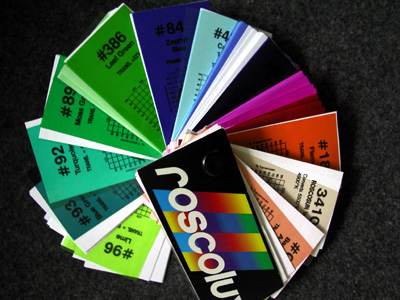Since there is always a call for ideas to integrate the arts into other school subjects, I wanted to note the intersection of theater and physics. One of the great things about the backstage of a theater is that it is a showcase of physics in practice.
View From The Grid
How often have you ever raised or lowered venetian blinds perfectly evenly? Probably never. There is always a bit of adjustment needed. Then you can appreciate the effectiveness of the pulley block system of a theatrical counterweight system in evenly raising and lowering battens (metal pipes) full of thousands of pounds of lighting instruments, cable and curtains.
Pulleys are among the most basic machines, but they can be used in sophisticated ways. But also, for students, climbing up to the grid of a theater is a lot of fun and pretty cool to see.
Counterweight System
The counterweight system allows you to easily raise and lower the battens by pulling on a rope. This provides a lot of opportunities to illustrate things for students. You can have slightly too much weight, slightly too little weight and just the right amount of weight on the arbor (carriage on which the weights are placed) and have the students try to raise and lower the load taking note of when it is most difficult.
There are also two types of counterweight systems: single purchase and double purchase. A single purchase system spans the entire wall of the stagehouse from floor to ceiling. A double purchase comes about half way down the wall. While a double purchase system takes up less space, it requires twice the amount of counterweights to handle the same load as a single purchase system.
Also, a pull on the ropes results in half the progress as on a single purchase system. If the batten would have raised one foot on a single purchase system, it will only rise six inches on a double purchase system. Most theaters aren’t rigged with both systems, but whichever your theater might have, knowing this students can calculate solutions for both.
(Word of Warning: Setting up these conditions should only be done by experienced personnel. Over or underweighting an arbor by too much is very dangerous. )
Electricity
It is common in theater to Two-fer (sometimes three-fer) lights, using one connector to provide power from the same circuit. However, since lighting instruments can have 500w, 750w or 1000w lamps in them, it is important to know whether you might overload the circuit. This is where the formula of Watts=Volts x Amps is needed.
The standard power supply in US theaters is 20amps and 120 volts. Even if students aren’t going to work in a field that requires knowing this, the “West Virgina formula” as W=V*A is known, is good to know for household projects.
Light and Color
This is can be a fun area for students because it is easy to demonstrate and experiment with. Theaters deal with the concepts of additive and subtractive color all the time.
Mix red and blue paint, what color do you get? Put a red and blue gel into this lighting instrument, what color do you get? Project this color light on a set or piece of clothing of this color, what color does it appear? Project this color on to people with different skin tones, what does it do to their appearance?
The great thing about gel swatch books is that they provide a distribution curve for each color showing the degree to which they block different parts of the light spectrum. You can look at the technical specs, demonstrate what the light passing through looks like and then flip through to a color with a different distribution curve and see how that manifests.
Certain colors absorb heat faster than others and the gels burn out or fade more quickly. (Literally, a hole will appear in some.) Students can do all sorts of experiments to which will burn out faster. Some lighter colors may burn out faster than you expect. Students might test if a darker color in an instrument with a 500w lamp will burn out faster than a light color in an instrument with a 1000w lamp.

Theatrical lighting instruments also employ many principles of reflection and optics. Different lenses placed on to the same housing will produce different beams of light. Sharpening the focus of light provides a different look than when the edges are more diffuse.
Ellipsoidal reflector spotlight (commonly referenced as Lekos or Source 4s) have internal shutters which can help shape the beam of light. Due to the inversion effect of the lens, adjusting the top shutter makes changes to the bottom of the beam and vice versa.
Education On The Cheap
Even if students don’t have any intention to go into the performing arts, seeing classroom concepts used in everyday practice, it is easier to realize “when will I ever use this in real life.”
This is an area where not having funding is actually a benefit to education. LED lighting instruments use so little power you could plug dozens into the same circuit and never worry about overloading it. Use of motorized winches removes the need to use human hands to power. If you have these things in your school, it makes it a little more difficult to illustrate these concepts to students.
Technology isn’t actually removing the need to worry about these issues. Backstage theater practices just serve as a simple illustration of concepts like power usage in our cellphones and counterweight systems that help dampen the sway of high rise buildings.
